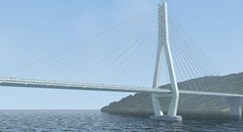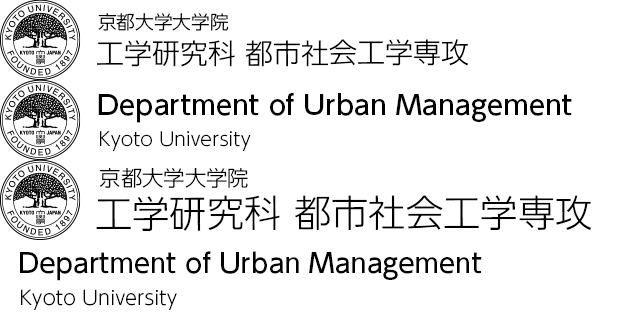Earthquake and Lifeline Engineering
Our laboratory conducts research aimed at minimizing structural damage caused by earthquakes by integrating vibration monitoring, numerical simulations, and experimental investigations. Targeting a wide range of critical infrastructure—including lifeline systems, bridges, and historic structures—we work to identify dynamic characteristics and reproduce seismic responses in order to evaluate seis-mic safety and propose effective strategies for improving earthquake resistance. In addition, we inves-tigate damage mechanisms of structures affected by earthquakes to clarify the causes of damage and support the development of mitigation measures. We are also developing structural health monitoring techniques based on vibration characteristics, with the goal of advancing practical technologies for structural maintenance and management.
Academic Staff
Aiko FURUKAWA
 Professor (Graduate School of Engineering)
Professor (Graduate School of Engineering)
Research Topics
Development of a numerical simulation method for analysis of elastic, failure and collapse behaviors of structures and development of structural damage diagnosis technique based on vibration monitoring.
Contacts
Room 136, C1 Bldg. , Katsura Campus
TEL: +81-75-383-3250
FAX: +81-75-383-3253
E-mail: furukawa.aiko.3w![]() kyoto-u.ac.jp
kyoto-u.ac.jp
Research Topics
Improving the Seismic Safety of Lifeline Infrastructure
Ensuring the resilience of lifeline infrastructure—such as roads, railways, water and sewage systems, gas, electricity, and telecommunications—is vital for maintaining public safety and societal continuity during earthquakes. Our laboratory is engaged in research to improve the seismic performance of these systems, focusing on advanced numerical simulations. We also evaluate the effectiveness of innovative structural solutions to support the development of earthquake-resilient infrastructures.

Figure-1 Numerical simulation of a buried pipeline crossing a fault
Protecting Historic Structures from Earthquakes
To protect historic structures and preserve them for future generations, we are developing advanced 3D numerical simulation methods to accurately simulate their seismic behavior and failure mechanisms. Our research aims to assess the earthquake resilience of heritage structures and clarify the causes of damage. While cultural heritage is typically restored to its original form after a disaster, doing so without addressing structural weaknesses risks repeated damage. We therefore explore seismic retrofitting strategies that strengthen these structures without compromising their historical and cultural value.

Figure-2 Stone arch bridge (Tsūjun Bridge), its numerical model, and example results from shaking table tests
Developing cable tension estimation methos based on vibration measurements
Cable-stayed bridges and other cable-supported structures rely on appropriate cable tension to safely bear loads. For maintenance purposes, it is essential to verify that each cable operates within its load-bearing capacity. Although the higher-order vibration method is commonly used to esti-mate tension from natural frequencies, it is not directly ap-plicable to special cases such as cables equipped with dampers or intersecting cables found in Nielsen–Lohse bridges. To address this limitation, we are developing ad-vanced tension estimation techniques tailored to these complex configurations, supporting the efficient mainte-nance of cable-supported bridges.

Figure-3 CG image of a cable-stayed bridge
